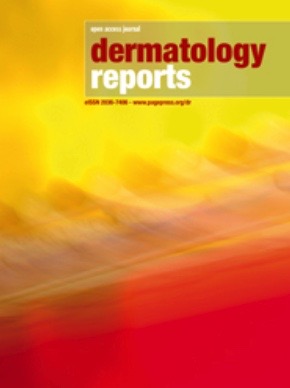Report on Violent Incidents in Madison, Wisconsin, and their Relation to Sustainable Development Goals
This report details a series of tragic events in Wisconsin, including a school shooting and subsequent suicides, analyzing them through the framework of the United Nations Sustainable Development Goals (SDGs). The incidents highlight critical deficiencies in achieving key targets related to health, peace, and justice.
Incident Chronology and Summary
December 16: School Shooting at Abundant Life Christian School
Natalie Rupnow perpetrated an attack at the Abundant Life Christian School, resulting in the deaths of one student and one teacher. Six other individuals were injured before Rupnow took her own life at the scene.
August 1: Death of Melissa Rupnow
Melissa Rupnow, the mother of the shooter, was found deceased in Janesville. Law enforcement officials have indicated the death is being investigated as an apparent suicide.
Legal Actions
Jeffrey Rupnow, the shooter’s father, has been criminally charged. The charges include two felony counts of intent to sell a dangerous weapon to a person under 18 and one felony count of contributing to the delinquency of a child, related to his providing the firearms used in the school attack.
Analysis of Failures in Achieving Sustainable Development Goals
SDG 3: Good Health and Well-being
The events underscore a profound crisis in mental and emotional well-being, directly contravening the objectives of SDG 3.
- Target 3.4: Promote mental health and well-being. The case demonstrates a catastrophic failure to address severe mental health challenges.
- Natalie Rupnow was reportedly diagnosed with post-traumatic stress disorder (PTSD), stemming from prolonged exposure to parental conflict.
- The shooter’s father allegedly attempted to address her distress by purchasing firearms, a counterproductive and dangerous approach to mental health support.
- The subsequent suicides of both the daughter and mother signify a complete breakdown of mental health support systems for the family.
- Target 3.5: Strengthen the prevention and treatment of substance abuse. The family’s history of instability was compounded by substance abuse issues, a factor that often exacerbates mental health crises and undermines family well-being.
SDG 16: Peace, Justice and Strong Institutions
The core of this tragedy is a failure to ensure peace and safety, highlighting significant gaps in the institutional frameworks designed to protect citizens, particularly children.
- Target 16.1: Significantly reduce all forms of violence and related death rates. The school shooting is a direct manifestation of the failure to prevent lethal violence within the community and in an educational setting.
- Target 16.2: End abuse, exploitation, and all forms of violence against children. Natalie Rupnow was a victim of a volatile home environment, characterized by:
- Constant parental conflict and multiple divorces.
- Exposure to online radicalization, hate speech, and ideologies idolizing mass violence.
- Negligent parental actions, culminating in access to lethal weapons.
- Target 16.4: Reduce illicit arms flows. The case points to a critical lapse in responsible arms control. The father is charged with illegally providing a minor with the weapons she used, demonstrating a failure in the institutional and familial responsibility to prevent firearms from falling into the hands of a vulnerable and dangerous individual.
SDG 4: Quality Education
While not a direct cause, the context of the violence severely impacts the objectives of SDG 4.
- Target 4.a: Build and upgrade education facilities that are child, disability and gender sensitive and provide safe, non-violent, inclusive and effective learning environments for all. The attack on Abundant Life Christian School represents a fundamental violation of the principle that educational institutions must be safe havens for learning and development. Such violence creates lasting trauma and fear, undermining the very foundation of quality education.
Analysis of Sustainable Development Goals in the Article
1. Which SDGs are addressed or connected to the issues highlighted in the article?
-
SDG 3: Good Health and Well-being
This goal is relevant due to the multiple instances of mental health crises and their fatal outcomes. The article explicitly discusses suicide, mental health disorders like PTSD, and substance abuse, all of which are central to ensuring healthy lives and promoting well-being.
-
SDG 4: Quality Education
This goal is connected because the central event, a fatal shooting, occurred at a school. The violence directly compromises the safety of the learning environment, which is a prerequisite for quality education. The article mentions the killing of a student and a teacher at the Abundant Life Christian School.
-
SDG 16: Peace, Justice and Strong Institutions
This is the most prominent SDG in the article. It addresses the core issues of violence, homicide, and the failure of justice and safety mechanisms. The school shooting, the deaths, the illegal provision of weapons to a minor, and the underlying family conflict all fall under the purview of promoting peaceful and inclusive societies.
2. What specific targets under those SDGs can be identified based on the article’s content?
-
SDG 3: Good Health and Well-being
- Target 3.4: “By 2030, reduce by one third premature mortality from non-communicable diseases through prevention and treatment and promote mental health and well-being.” This target is directly relevant as the article details the suicide of the shooter, Natalie Rupnow, and the apparent suicide of her mother, Melissa Rupnow. It also mentions Natalie suffered from post-traumatic stress disorder (PTSD) as a result of her parents’ conflict.
- Target 3.5: “Strengthen the prevention and treatment of substance abuse, including narcotic drug abuse and harmful use of alcohol.” The article notes that “Melissa had a history of substance abuse,” linking her struggles to the family’s overall instability and connecting to this target.
-
SDG 4: Quality Education
- Target 4.a: “Build and upgrade education facilities that are child, disability and gender sensitive and provide safe, non-violent, inclusive and effective learning environments for all.” The school shooting at Abundant Life Christian School, which resulted in the death of a student and a teacher and injured six others, represents a catastrophic failure to provide a “safe, non-violent” learning environment.
-
SDG 16: Peace, Justice and Strong Institutions
- Target 16.1: “Significantly reduce all forms of violence and related death rates everywhere.” The article is centered on this target, describing multiple forms of violence: the school shooting that killed two people, the shooter’s suicide, and the subsequent suicide of her mother.
- Target 16.2: “End abuse, exploitation, trafficking and all forms of violence against and torture of children.” This is relevant as the shooter, Natalie, was a minor who experienced significant psychological distress. The article states, “The parents fought constantly, often in front of their daughter,” which constitutes a form of psychological violence. Furthermore, her father providing her with weapons is a form of endangerment.
- Target 16.4: “By 2030, significantly reduce illicit financial and arms flows…” This target is addressed through the issue of illegal access to weapons. The father, Jeffrey Rupnow, was “charged with two felony counts of intent to sell a dangerous weapon to a person under 18,” which directly relates to controlling the illicit flow of arms to unauthorized individuals, particularly minors.
3. Are there any indicators mentioned or implied in the article that can be used to measure progress towards the identified targets?
-
For SDG 3 (Good Health and Well-being)
- Indicator 3.4.2 (Suicide mortality rate): The article provides direct data points for this indicator by reporting the suicide of Natalie Rupnow and the apparent suicide of her mother, Melissa Rupnow.
- Prevalence of mental health disorders and substance abuse: The article implies the need to track these issues by mentioning Natalie’s PTSD diagnosis and her mother’s “history of substance abuse.”
-
For SDG 4 (Quality Education)
- Indicator 4.a.2 (Number of attacks on students, personnel and institutions): The article provides a specific instance of an attack on a school, including the number of casualties (two killed, six injured), which serves as a direct data point for this indicator.
-
For SDG 16 (Peace, Justice and Strong Institutions)
- Indicator 16.1.1 (Number of victims of intentional homicide per 100,000 population): The two killings at the school are direct data for measuring intentional homicide rates.
- Indicator 16.2.1 (Proportion of children aged 1-17 years who experienced any physical punishment and/or psychological aggression by caregivers): The article implies psychological aggression by stating, “The parents fought constantly, often in front of their daughter.”
- Indicator related to illicit arms flows (Target 16.4): The criminal charges against the father for providing a weapon to a minor serve as an indicator of law enforcement action against the illicit transfer of firearms. The number of such prosecutions could be a measure of progress.
4. Summary Table of SDGs, Targets, and Indicators
| SDGs | Targets | Indicators (Mentioned or Implied in the Article) |
|---|---|---|
| SDG 3: Good Health and Well-being |
3.4: Reduce premature mortality from non-communicable diseases and promote mental health.
3.5: Strengthen prevention and treatment of substance abuse. |
Indicator 3.4.2 (Suicide mortality rate): Documented suicides of Natalie and Melissa Rupnow. Prevalence of mental health disorders: Mention of Natalie’s PTSD. Prevalence of substance abuse: Mention of Melissa’s “history of substance abuse.” |
| SDG 4: Quality Education | 4.a: Provide safe, non-violent, inclusive and effective learning environments for all. | Indicator 4.a.2 (Number of attacks on students, personnel and institutions): The fatal shooting at Abundant Life Christian School, killing a student and a teacher. |
| SDG 16: Peace, Justice and Strong Institutions |
16.1: Significantly reduce all forms of violence and related death rates.
16.2: End abuse, exploitation, and all forms of violence against children. 16.4: Significantly reduce illicit arms flows. |
Indicator 16.1.1 (Number of victims of intentional homicide): The two people killed in the school shooting. Indicator 16.2.1 (Psychological aggression by caregivers): Constant fighting between parents in front of their daughter. Indicator for illicit arms (Target 16.4): Father charged with providing weapons to a person under 18. |
Source: jsonline.com







